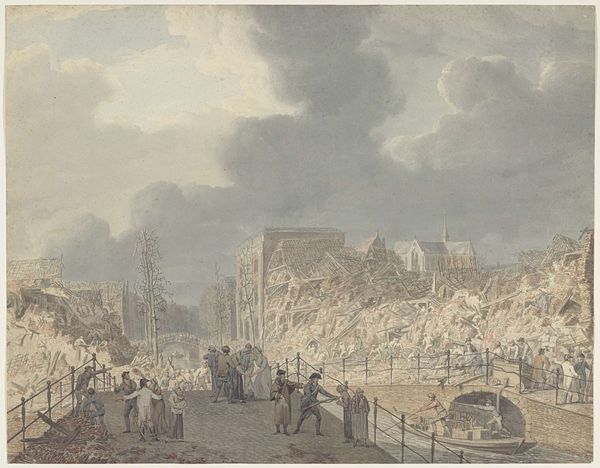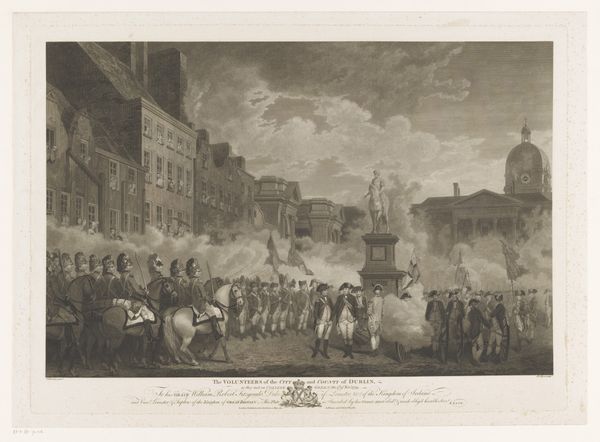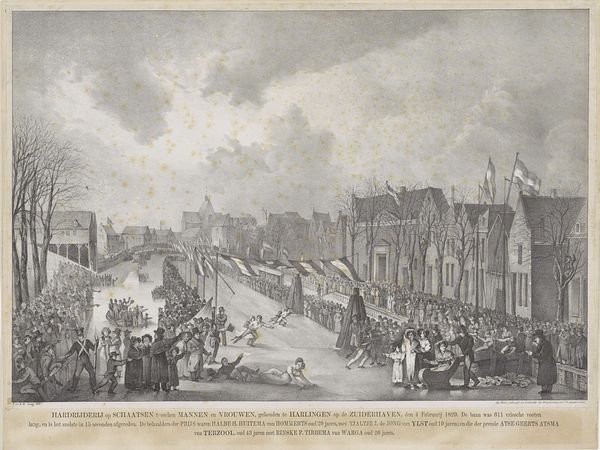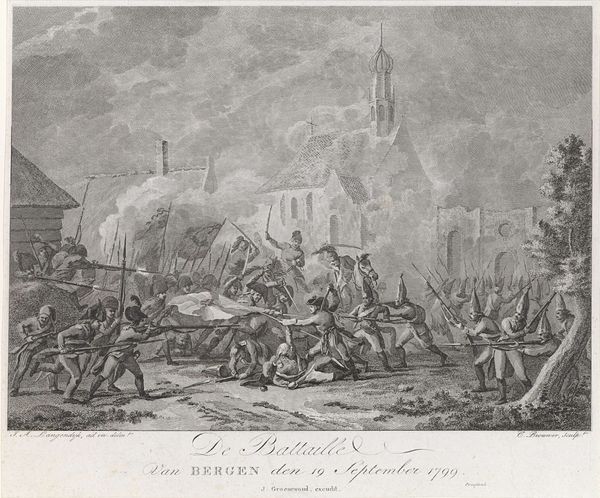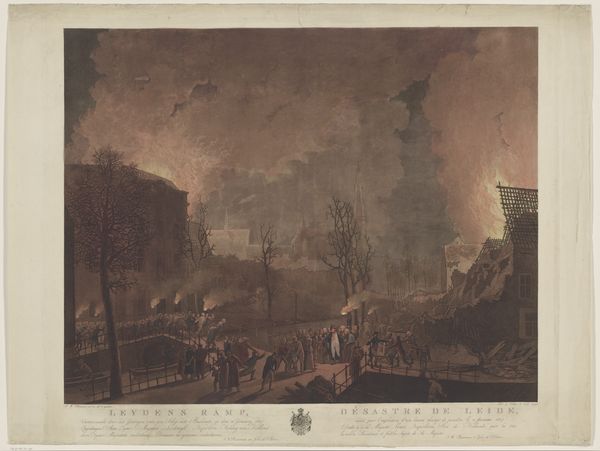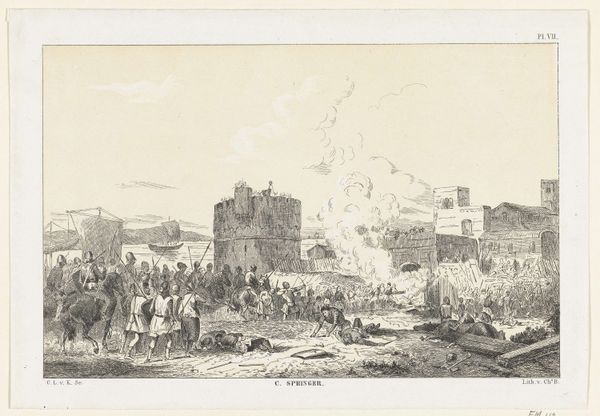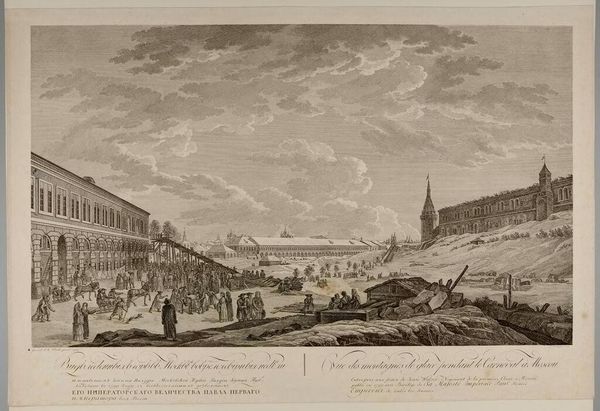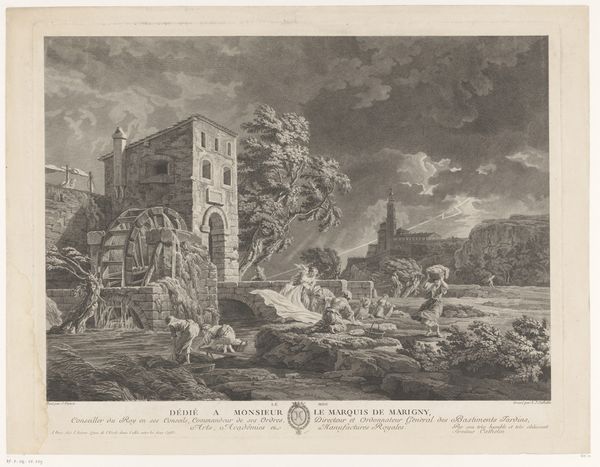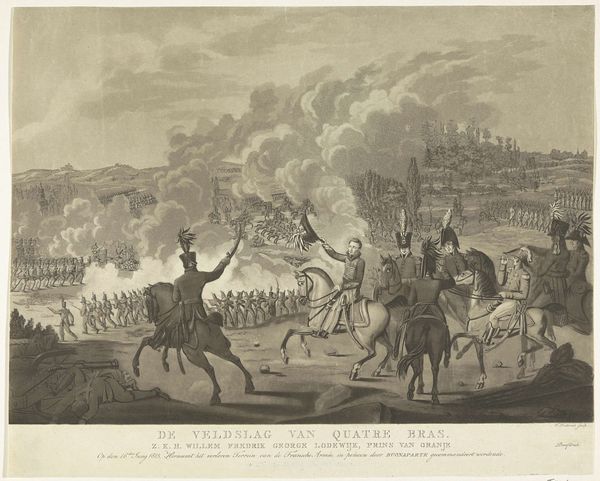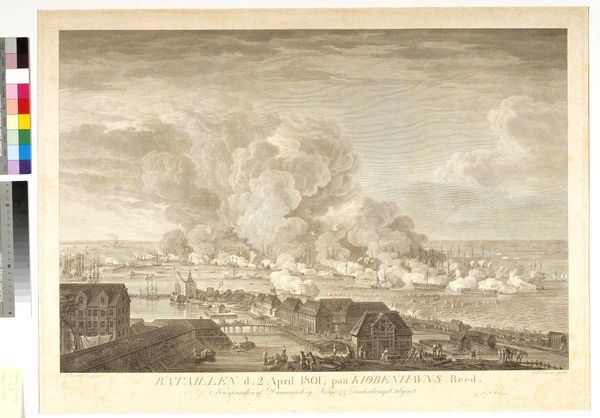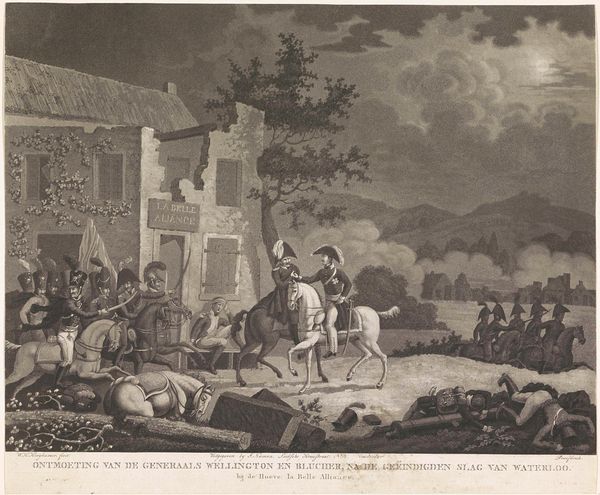
Leydens Ramp, Veröorzaakt door het springen van een Schip met Buskruit zoo als het zich vertoonde in den Morgenstond op den 13 January 1807 / Désastre de Leide, Causé par l'explosion d'un bateau (...) 1809
0:00
0:00
print, watercolor, engraving
# print
#
watercolor
#
romanticism
#
cityscape
#
watercolour illustration
#
history-painting
#
engraving
#
watercolor
Dimensions: height 665 mm, width 860 mm
Copyright: Rijks Museum: Open Domain
Curator: Let’s discuss this print titled "Leydens Ramp," or "Disaster of Leiden," created in 1809 by A. Lutz. It documents the devastating explosion in Leiden in 1807. The medium is a combination of engraving and watercolor. Editor: It’s immediately striking how the somber palette emphasizes the sheer devastation. A landscape reduced to rubble beneath an ominous, turbulent sky. The figures almost seem dwarfed, overpowered by the scale of destruction. Curator: Lutz crafted this image just two years after the disaster, during a period of great political and social upheaval in the Netherlands, with the Batavian Republic recently dissolved by Napoleon. These historical factors contextualize how traumatic events were perceived and memorialized. It’s interesting that Lutz includes text on the print in both Dutch and French, illustrating a period of linguistic transition under French influence. Editor: It's fascinating to consider this image through the lens of trauma theory. The event itself, a gunpowder explosion, would have induced widespread shock and psychological distress. How does Lutz's romanticized representation serve as a collective coping mechanism, and who is afforded this solace? Are certain experiences erased in favor of nationalist narratives? Curator: I think that the perspective is worth noting as well. The artist positions the viewer from a removed, almost voyeuristic vantage point. While there are figures in distress depicted, it also subtly aestheticizes their suffering. It echoes the then popular tradition of history painting, albeit with a clear element of Romanticism evident in the artist’s emphasis of dramatic atmosphere and sublime horror. Editor: And who are these people, precisely? Their posture of suffering and engagement seems coded, like stand-ins enacting appropriate responses, and is there attention being given to the victims depending on race, gender or class? How might that narrative of tragedy change? It seems a highly staged drama playing out, and to what end. Curator: Precisely! Lutz is both documenting a moment in time and engaging in political image making. Editor: This print provokes difficult, important conversations about historical memory and the politics of representation. Curator: Indeed. It's a powerful visual testament to a tragic event, filtered through the artistic and sociopolitical lenses of its time.
Comments
No comments
Be the first to comment and join the conversation on the ultimate creative platform.
